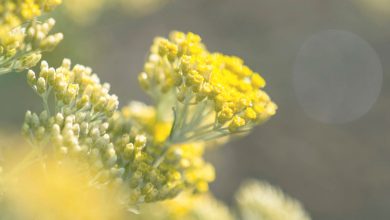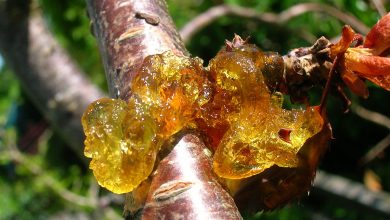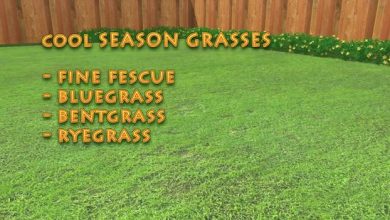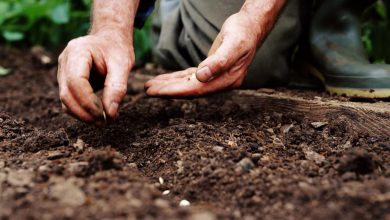Complete Guide on How to Plant Carnations [Step by Step + Images]
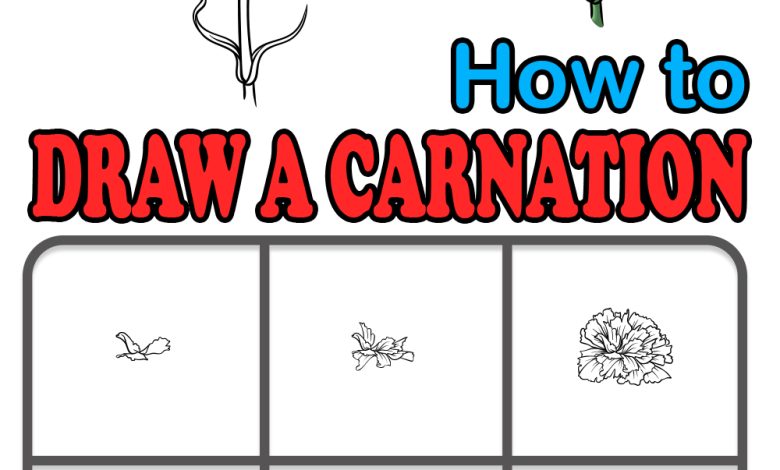
Important points for Planting Carnations:
- When? In summer and until mid- autumn.
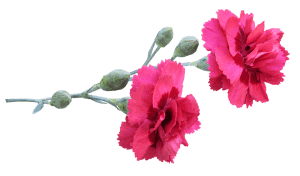
- Where? It requires a lot of sunlight. They are not frost hardy flowers. The optimum temperature ranges between 20-24º C.
- How do we prepare the land? The carnation prefers sandy and loose soils, porous, fertile and with good drainage. Does not tolerate clay soils.
- How do we water? It is not very demanding with risks. We try to keep the land from flooding. Every other day in summer, by drip.
- Sow by seed? Planting beds 1m wide and 30-40cm deep, separated by 0.5m aisles.
- Planting by cutting? Place the cuttings 10 to 15 cm, to a depth of approximately 3 cm
- Plagues and diseases? Aphids, thrips, leaf miners, European tortrix, rust and leaf spot.
Along with the roses, they are probablythe most popular flowers in the world.
The carnation is undoubtedly one of the most beautiful plants in the world. Of Mediterranean origin, it is a plant that blooms several times a year in various shades ranging fromthe reds, the pinks, the whites and the yellows.
One of its most widespread uses is as an ornament for special events, mainly weddings. We tell you how to grow carnations in a simple way. Make your garden look beautiful and elegant.
Perhaps you may also be interested in how it is sown:
What do we need to plant carnation?
When should it be sown?
preferably insummer and until mid-autumn.
It blooms during the spring and summer seasons. Although their flowering lasts approximately two months, with the correct care, indoors, they can bloom throughout the year.
Where?
 light is essentialfor the cultivation of carnations, as it influences their vegetative growth, the firmness of the stem and the quality and quantity of the flowers.
light is essentialfor the cultivation of carnations, as it influences their vegetative growth, the firmness of the stem and the quality and quantity of the flowers.
It requires large amounts of direct sunlight throughout the day. If the light is insufficient, the shoots are weak and the stems are thin and brittle.
As for the temperature, they are not frost resistant flowers. Constant temperatures of 0°C or lower cause damage and deformation. Likewise, temperatures above 35 ºC are fatal for the plant.
The optimum temperature in summer is between 20 and 24 ºC, while in winter it develops well in temperatures that range between 15 and 18 ºC.
How often should it be watered?
It is not very demanding in terms of risks.
During the first three months, it can be watered once every two days, ensuring thatthe ground does not puddle.
Then just keep the soil moist to the touch. Daily and moderate irrigations are sufficient during the hottest seasons, preferably with a drip system, avoiding touching the leaves and buds.
The irrigation deficit negatively influences the development and quality of the flower, while the excess of water causes generalized chlorosis in the plant.
The optimal range of relative humidity is between 60-70%.
How do we prepare the land?
The carnation prefers sandy and loose soils, porous, fertile and with good drainage. Does not tolerate clay soils.
The pH must be between 6.5 and 7.5.
It also grows well on artificial substrates, such as rock wool and perlite.
What are the most favorable associations for carnation cultivation?
They should be planted in a spot where only carnations grow, as they are sensitive to any plants they may have to compete with for nutrients.
How to grow and plant carnation Step by Step
Clear the ground
Extract weeds and remains of previous crops and all kinds of residues to ensure that your carnation can develop properly.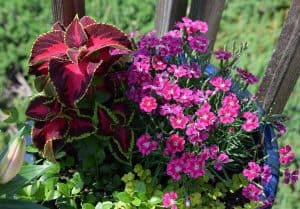
Mulching should not be done when growing carnations. You must have adequate air circulation in the stems of the carnation, so that it has adequate growth.
It must be kept free from moisture and foliage at all times.
Moisten the soil a week before planting
This reduces the risk of expelling the seeds by the force of the water.
fertilize the soil
Spread some organic matter on the soil to improve the overall quality before you start planting your carnation seeds.
Peat moss is excellent for encouraging carnation growth.Pine bark powder can also be used as fertilizer.
A soil rich in nitrogen is not the most suitable for carnations.
Trick:If you plant legumes (beans, peas, etc) nearby, they release nitrogen into the soil and are an excellent natural fertilizer.
Remember not to use too much fertilizer, as it can be harmful, causing less flowering.
Carnation can be grown in two main ways
Through seeds directly in the orchard or nursery
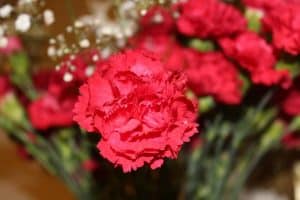 Planting beds 1m wide and 30-40cm deep are used, separated by 0.5m aisles.
Planting beds 1m wide and 30-40cm deep are used, separated by 0.5m aisles.- You should introduce them to a maximum depth of 1 cm, trying to cover them with a little mulch.
- Water the soil regularly until the seeds germinate, which will take about 20 days.
By cuttings
- It should be done in spring or early summer.
- Following the same instructions for the container, place the cuttings 10 to 15 cm apart, at an approximate depth of 3 cm, making sure that the end you bury does not contain leaves to prevent the stem from rotting.
- Cuttings will root in approximately 25-30 days. This method is preferably used for perennial carnations.
- The disadvantage of this procedure is that the carnation does not have such an intense smell, compared to reproduction by means of seeds.
To know more, you can see: Carnation cuttings and Carnation cuttings in water.
Select the healthiest and strongest seedlings.
If more than one seed has germinated in each hole, keep the strongest one. To do this, do not pull the weak one, as you can damage the leaves. A simple pruning at ground level is sufficient.
transplant your shoots
If you have planted in a pot or seedbed, you must transplant a month after planting. Choose one sunny and well ventilated area in the garden.Leave between 10 and 20 centimeters between each of your plants.
Tutoring
Before proceeding to planting, a tutor mesh should be placed to support the plant and prevent the stems from bending. They must be placed before the stem reaches its final height. It is important that the meshes are tight enough to achieve good tutoring.
grip
 It is a technique that makes the plant branch.
It is a technique that makes the plant branch.
It consists of making a cut with the hand above the fifth knot. It is usually done 4-6 weeks after planting. The higher the pinching, the higher the number of flowers, but the quality of the flowers is likely to decrease.
The characteristics that determine the quality of the carnation are:
- Stem stiffness and length. The stems must be erect.
- The ability of the stems to emit side shoots.
- The number of flowers per stick.
carnation harvest
The first harvest takes place three to four months after planting. It occurs when the flower bud has open outer petals, in uniflores. If they are multiflowers, the harvest takes place when the three terminal flowers begin to open.
The cut must be made with the flowers somewhat open.
It is cut approximately one centimeter below the flower stem node.
Carnation pests and diseases
Some of the most common pests and diseases that affect carnations are:
aphids
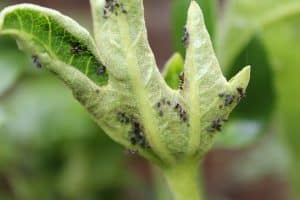 To combat the aphid, potassium soap can be applied to the underside of the plants.
To combat the aphid, potassium soap can be applied to the underside of the plants.
If the plague persists or is very abundant, we will also apply neem extract.
thrips
Biological control can be carried out through its natural enemies. Thrips have several natural predators such as certain varieties of mites, especially the Amblyseius barkeri and the Orius bug.
Another form of prevention is to place meshes around the crops and clean up weeds and debris.
To combat them, in addition, ecological alternatives can be used, such as potassium soap and, in extreme cases, natural insecticides such as neem extract .
Leaf Miners
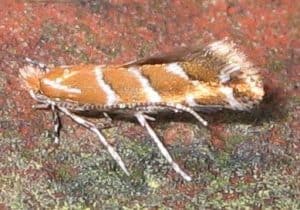 One form of prevention is to place meshes around the crops and clean them of weeds and any type of waste or remains of previous crops.
One form of prevention is to place meshes around the crops and clean them of weeds and any type of waste or remains of previous crops.
Similarly, leafminer infestation can be prevented by planting trap crops near the plants to be protected. You can plant pigweed, columbine or abutilon to attract the attention of miners and reduce their incidence in your crops.
european tortrix
They are Lepidoptera whose larvae eat the leaves and pierce the flower buds, devouring them.
For its control, a treatment with Bacillus thurigiensis is efficient.
fusarium
The best way to avoid its appearance is the use of soils resistant to fusarium. Man- made substrates, such as rockwool and perlite, are great options.
Resistant varieties can also be used.
Rust
To control it, it is recommended to avoid excess nitrogen.
Leaf Spot
Eliminate plants with stippling. Avoid aerial irrigation (sprinkler or hose).
Watering is recommended at times when the foliage dries quickly.

